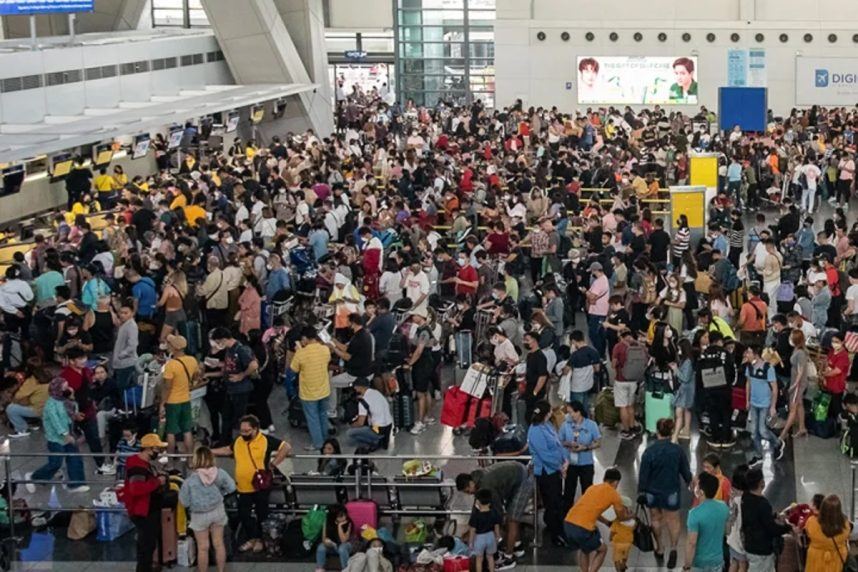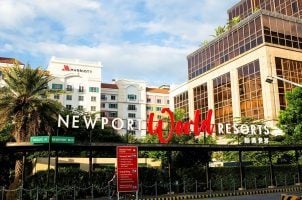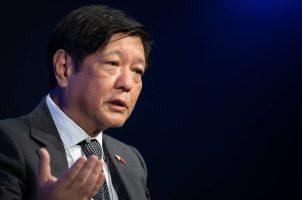Newport World Resorts Owner Seeks Control of Manila Airport, Submits $4.8B Bid
Posted on: June 19, 2023, 11:17h.
Last updated on: June 19, 2023, 11:30h.
The parent company of Newport World Resorts in Manila wants to assume partial control of the capital city’s international airport.

Alliance Global Group is in the process of acquiring full ownership of the integrated resort casino in the Philippines. Run by Chinese-born billionaire Andrew Tan, Alliance is purchasing Genting Group’s 40% stake in the casino, formerly Resorts World Manila.
Alliance is betting big on the Philippines’ COVID-19 recovery. Tan believes that Southeast Asia’s gaming market will benefit from China cracking down on VIP junket operators in Macau, with the thinking that many of those high rollers will find the Philippines attractive for their gambling dollars.
To accommodate the predicted rush of inbound traffic, Alliance Global has joined a partnership of commercial conglomerates that are seeking to renovate and expand the Manila International Airport.
Unsolicited $4.8B Bid
Alliance Global Group is one of seven companies that has joined the entity called the Manila International Airport Consortium (MIAC). The collective recently submitted an unsolicited bid to the Philippines government to rehabilitate the Ninoy Aquino International Airport (NAIA).
The consortium tells the central government that it will invest 267 billion Philippine pesos (US$4.8 billion) into the airport in exchange for assuming control of the facility for a minimum of 25 years. The group says the initial phase of the development, should the Philippines government take up the offer, would include expanding the airport’s capacity from 31 million annual passengers to 54 million travelers by 2025.
The second phase would further expand the airport to increase annual capacity to 62.5 million passengers. The second phase would include a new terminal and additional runways.
The Manila International Airport Consortium recognizes the immense task of transforming NAIA to meet the exponentially growing demands of Manila air travel, not only in the here and now but also in the future,” said Alliance Global CEO Kevin Tan, one of Andrew Tan’s four children. “It is because of this that the members of the consortium have pooled together its significant resources, technical expertise, and operational experience to put forward a NAIA Masterplan.”
The consortium’s six other member conglomerates are Aboitiz InfraCapital, AC Infrastructure Holdings, Asia’s Emerging Dragon Corporation, Filinvest Development, JG Summit Infrastructure Holdings, and US-based Global Infrastructure Partners.
How Airports Make Money
According to Aviation Digest, airports generate revenue in a variety of ways through both aeronautical and non-aeronautical/commercial endeavors.
The non-aeronautical revenue comes from airports leasing out their retail spaces, restaurants, and lounges. Airports also generate a significant portion of their revenue through parking, and some airports like London’s Heathrow, levy a toll just to drop off passengers.
But aeronautical income is naturally the backbone of an airport’s business model. Airports charge airliners landing fees, passenger fees, usage fees for gates and security services, and terminal fees. Airlines build those fees into their ticket prices.
Related News Articles
Melco to Phase Out Plastic Bottles at Resorts in Macau, Manila, Cyprus
Philippines Directs Gaming Regulator to Review Money Laundering Defenses
Most Popular
LOST VEGAS: ‘Tony The Ant’ Spilotro’s Circus Circus Gift Shop
Casinos That Were Never Casinos
Most Commented
-
End of the Line for Las Vegas Monorail
— April 5, 2024 — 90 Comments -
Mega Millions Reportedly Mulling Substantial Ticket Price Increase
— April 16, 2024 — 9 Comments -
Long Island Casino Opponents Love New York Licensing Delays
— March 27, 2024 — 5 Comments
















Last Comments ( 3 )
Again, WRONG PROJECT PRIORITY! Another grandstanding of Philippine’s so-called business tycoons! Only necessary repairs/renovations. Better to build new strategically located airports outside Metropolitan Manila to decongest the Metropolitan’s already heavy traffic. One good example is the ongoing Bulacan International Airport project. Talk about “IMPERIAL MANILA” once again! Why not look for ways to help upgrade airports from the far Southern Tagalog or Visayas and Mindanao! Is Metropolitan Manila the only practical international gateway?!
Re the taking over of MIAA by a CONSORTIUM. The planned construction of buildings and other infrastructures will not solve the congestion at MIAA/NAIA dahil isa lang an INTERNATIONAL RUNWAY at limited ang DOMESTIC RUNWAY. Hindi rin puwede ang PARALLEL RUNWAY dahil sa obstuction sa C5 SKYWAY and PARANAQUE SUBDIVISIONS na nauna sa airport. Dapat ilipat sa CLARK INTERNATIONAL AIRPORT nlng. Ang problema proposed EXPRESS WAY via BULLET TRAIN di pa nagagawa, TATLO ADMINISTRATIONS na ang nakalipas ( PGMA PAQUINO N PDIGONG). The current capacity of the NAIA is at 40 aircraft movements per hour, consisting of COMMERCIAL FLIGHTS, CARGO FLIGHTS & GENERAL AVIATION.
I like the proposal and the faster it can be accomplished the better for us ordinary travellers even as we are worried the high cost which may be imposed.